|
Located in Nova Scotia's South Shore Region, the Town of Lunenburg is a must see on anyone's visit to Nova Scotia. Lunenburg is the second oldest British settlement in Canada and is well known as a UNESCO World Heritage Site. With such a rich and colourful history, there are a number of phenomenal places to see and activities to do when visiting there. Here is our list of the 10 Best Things To Do In Lunenburg.
Fisheries Museum of The Atlantic
Recommended time to visit: 2 hours The Fisheries Museum of the Atlantic is located along the Lunenburg waterfront and is one of the finest museums in Nova Scotia. The museum brings to life Lunenburg's deep connection to the sea and the importance that the fishing industry has played in its history. The museum consists of many comprehensive exhibits, a theatre, and a large aquarium that holds species of fish that are commonly harvested off the coast of Nova Scotia and the Grand Banks in Newfoundland. The museum also hosts the Salt Store Gift Shop onsite. The gift shop has a wide assortment of merchandise, giftware, and wareables to suit all age ranges. They also have a variety of books, photos, and souvenirs to choose from. For those looking to grab something to eat, The Old Fish Factory restaurant is on the ground level and features a patio area sheltered by umbrellas that allow for dining along the waterfront. The restaurant's name honours the building's history, when it was owned by Lunenburg Sea Products and used as an ice house. As you walk along the waterfront, you will see numerous artifacts and vessels that are owned by the museum. There are several anchors, lobster traps, scallop draggers, and other nautical items. If you have kids, make sure to get them to ring the bell on the large sea buoy. The sound of which you can hear for some distance away. Make sure to gather around the mannequin, Captain Seymore Fogg, for a memorable photograph or selfie. The salt bank schooner, Theresa E. Connor, is an original fishing vessel that was built in Lunenburg in 1938 by the Smith and Rhuland shipyard, the same company that had built the legendary Bluenose I schooner. Theresa E. Connor fished out of Lunenburg until 1966. After it retired from the fishery, the ship underwent a restoration program to prepare it for use as a museum. For 10 years, 1967-1977, the Theresa E. Connor was the only museum dedicated to telling the story and history of the fishing industry in Lunenburg. Today, the Theresa E. Connor is one of only several surviving original tall ships in Canada. The side trawler, Cape Sable, is docked nearby and is accessible to patrons of the museum. The Cape Sable is a retired modern era fishing vessel that was built in 1961. The ship illustrates the advancements made in the fishing industry after the salt bank schooner era, specifically the practice of trawling as a method of fishing, internal combustion engines in place of sail as a means of propulsion, and the use of steel instead of wood in ship design. If time allows for it, a stop by the Fisheries Museum of the Atlantic is a great way to learn about the rich history of Lunenburg's involvement in the fishing industry and the importance it has played in the town's economy since its inception. Bluenose II
Recommended time to visit: 30 minutes (when docked). If there's one thing you should do while visiting Lunenburg, it`s taking some time to visit the legendary Bluenose II docked along the Lunenburg waterfront. The ship is open to the public free of charge while docked. You can board the ship and stay on the deck or go below if you wish to do so. There are plenty of crew members on board to render assistance and answer questions regarding the operation of the ship. If you're looking for a truly unique and memorable experience, the Bluenose II has (2) harbour cruises per day that takes guests on a 2-hour sail of Lunenburg Harbour. It comes highly recommended by those who have done so. The morning cruise departs at 9:30 AM and the afternoon cruise leaves at 1:30 PM. It's suggested that you purchase tickets in advance to avoid disappointment should the cruises be sold out, before the day of sail. You can purchase tickets online on the Bluenose II`s website or directly at the Bluenose II Company Store. Lunenburg is the home port to the Bluenose II, though it has a schedule that takes it throughout the Atlantic Maritime Provinces and on occasion, into the United States. So, there's a possibility that the Bluenose II may not be in Lunenburg during your visit. You can check the Bluenose II's schedule to verify where it will be during the summer months. Make sure to drop by to visit the nearby Bluenose II Company Store to see some of the Bluenose themed memorabilia and merchandise available for sale. The funds generated from the store are used to support the ship's operations and help keep the Bluenose II sailing for future generations. History of the Bluenose... The original vessel named Bluenose was built in 1921 at the Smith and Rhuland shipyard using blueprints drafted by designer William Roue. The Bluenose's design incorporated several distinct features that enhanced the speed of the vessel while at sea compared to other schooners of its day. Despite the inherent advantages of its design, it would take an exceptional captain and crew to bring out the best the Bluenose had to offer. The Bluenose was commanded by Captain Angus Walters. For many years, Walters had a reputation for being one of Lunenburg's most capable and respected captains. He was known to bring home the largest catches when fishing vessels went out to sea. The crew aboard the Bluenose were competent and highly skilled seamen. Together, Captain and crew would become revered first for their fishing endeavours - then for their unequaled success when the Bluenose began racing in the International Fisherman's Trophy Series in 1921. Today, the Bluenose is remembered for its racing exploits than as a working vessel. The Bluenose was not only the fastest vessel in Lunenburg but in all of Nova Scotia. The Bluenose and her crew were fierce competitors and never lost a race that it had entered. The success of the Bluenose became a source of pride for the people of Lunenburg, Nova Scotians, and all Canadians alike. It generated a strong sense of nationalism and served to unite Canadians from coast to coast. It put the little town of Lunenburg into the spotlight. Almost 100 years later, the Bluenose legacy lives on. Well into the last years of its life expectancy as a seaworthy vessel, the Bluenose was sold to the West Indies Company in 1942. The Bluenose was used as a cargo ship during WW 2, running supplies from Caribbean nations to the United States. Sadly, the Bluenose was lost in an accident off the coast of Haiti in 1946, where it ran aground on a coral reef. In 1963, Oland Brewery of Halifax, Nova Scotia brought to market a new beer that was named Schooner. To promote and market its new beer, the brewery commissioned the construction of a new vessel based on the blueprints of the original Bluenose. Smith and Rhuland, the shipyard that built the original Bluenose, was contracted to build the new vessel, aptly named Bluenose II. The Bluenose II wasn't an exact historical replica as there were some minor alterations to accommodate for the ship's use as a marketing vessel as opposed to one that would be used for fishing. The Bluenose II would launch later in 1963 with the 83-year-old Angus Walters as its honourary Captain during its inaugural first sail. Oland Breweries used the Bluenose II for nearly 8 years before selling it to the Province of Nova Scotia for $1 in 1971, under the condition that the ship was used as a sailing and tourism ambassador for Nova Scotia and all of Canada. Today, almost 60 years later, the Bluenose II continues its mission, operated under the Lunenburg Marine Museum Society on behalf of the Province of Nova Scotia. The Dory Shop
Recommended time to visit: 20 minutes At the far end of the Lunenburg waterfront, there's a 100-year-old company named, The Dory Shop, that has its origins from 1917. The Dory Shop is a private business and is not open to the public. However, if you're looking for some great pictures to take home with you, this is a great spot. There, are several old rustic buildings, and a wharf area that is reminiscent of the distant past. It is, without a doubt, a postcard image if there ever was one. The Dory Shop is one of the last vestiges of a bygone era, where craftsmen build traditional wooden fishing dories using the techniques, methods, and materials that have been used for over 250 years in Lunenburg. The dory was the workhorse of the fishing fleets during the era of the salt bank fishing era, with schooners having a number of them stored on their decks. During peak periods, The Dory Shop would build and sell 150 ships per year, using production methods with individual craftsmen having specific specialized tasks to perform to make the manufacturing process more efficient. In modern times, dories are used for recreational purposes where the historic design is unique and desirable to some boaters. Others use them as runabouts, to travel from ship to shore. It's of great irony that this +100-year-old company uses the modern day internet to sell vessels based on a +250-year-old design. The Dory Shop sells to customers the world over - no doubt something the original company owners could never have dreamt of doing. Knaut Rhuland House Museum
Recommended time to visit: 30 minutes If you want to have a true appreciation of how the people of Lunenburg lived during the early years of its settlement, then a visit to the Knaut Rhuland House Museum will be of interest to you. The museum is beautifully decorated with artifacts from the late 1700s to early 1900s that give you the feel of being taken back in time. Named after the home's first (2) owners, Benjamin Knaut and Conrad Rhuland, 2020 celebrates the 20th Anniversary of the museum being operated by the Lunenburg Heritage Society. The Knaut Rhuland Museum is a Town of Lunenburg Municipal Heritage Property, a Registered Heritage Property in the Province of Nova Scotia, and designated a National Historic Site in Canada. The home has its origins dating back to 1793 when it was built by Benjamin Knaut, the son of one of Lunenburg's original founders. Knaut was a local merchant and sheriff in Lunenburg. He designed the home's exterior to have a New England Colonial appearance with the interior finish having a more traditional English Georgian influence. Knaut owned the home for 20 years and sold it to Conrad Rhuland in 1893. Rhuland, also the son of an original founding citizen of Lunenburg, was a mariner and on occasion, a privateer. Rhuland made some interior design changes to the home that were inspired by his Germanic heritage. Rhuland owned the home briefly - for only 10 years. He sold the property to John Creighton in 1823. Creighton was an important Lunenburg judge and provincial politician who was a dedicated public servant up until his death in 1873. After Creighton's death, the home stayed within his family for 80 years and used as a residence. In 1906, the home was sold to the organization Independent Order of Odd Fellows. The Lunenburg Heritage Society purchased the home in 2000 with the intention of creating a museum. After acquiring artifacts to decorate the home, the museum was opened to the general public. St. John's Anglican Church
Recommended time to visit: 30 minutes Old churches are quite numerous in Nova Scotia, although some have succumbed to fires, neglect, and inevitable deterioration. Along the South Shore of Nova Scotia, small rural churches are a common site. Lunenburg in particular, is blessed to have (6) of them in the Old Town itself (pardon the pun). Old churches appeal to people for a variety of reasons. Many just appreciate the amazingly beautiful architecture that goes into their design. One of the most historic churches in Canada resides in Lunenburg. The St. John Anglican Church is the 2nd. oldest Anglican Church in Canada, having been established in 1753. It is recognized as a National Historic Site of Canada. The church, still operating after all of these years, holds services twice a week. On Wednesdays, services are held at 10:00 AM, while on Sundays, they are held at 8:30 AM and 10:30 AM. During the summer months, St. John's Anglican Church is open to guests and tourists who wish to visit. There is no admission charge, however, donations are accepted and graciously appreciated. St. John's Anglican Church has a well documented and storied history. Created in 1753, it was the first church built in Lunenburg. During the initial years of the fledgling settlement, the church hosted services held by other faiths, primarily German Lutherans. The church's first minister was Jean Baptiste Moreau. Moreau was one of two missionaries who accompanied Edward Cornwallis from England to settle the town of Halifax, in 1749. When the opportunity became available, Moreau accepted the position and left Halifax to become one of the founding members of Lunenburg in 1753. Over the years, St. John's Anglican Church underwent periods of expansion and re-design, with the first being in 1840. Later in 1873, the church was extensively modified and was styled in the Gothic architecture that exists today. A devastating fire, assumed to be arson, engulfed the church on October 31, 2001. The fire did extensive damage, though miraculously the floor, pews, and alter were for the most part undamaged. The fire was so intense that firefighters' trucks ran out of fresh water and they were forced to pump seawater from the harbour in order to control the blaze. Unfortunately, what was left of the church was now damaged from the salt water. After the fire, a great deal of deliberation took place to decide what to do next. Some wanted the church grounds to cleared of the remains and turned into a park. A majority of others wanted the church to be rebuilt. In the end, the decision was made to go ahead and rebuild. In order for St. John's Anglican Church to maintain its status as a National Historic Site of Canada, conservationists had to incorporate as much of the remaining original structure as possible. This increased the level of complexity and cost of the project, not to mention the added time it would take to complete the work involved. It took 4 years and over $6.7 million in funding to restore the church, re-opening in 2005. Fishermen's MemorialRecommended time to visit: 15 minutes Located on the Lunenburg waterfront between the Fisheries Museum of the Atlantic and Adams & Knickle, lies Fishermen's Memorial. The memorial was created in 1996 to honour the sacrifice of mariners and fishermen from Lunenburg who tragically lost their lives at sea. Stopping by the memorial gives you a better appreciation for the hardships and tragedies the people of Lunenburg faced as they made their lives from the bounty of the sea. It's a sobering reminder of the awesome power of nature and the inherent dangers of the sea. Even with today's modern weather forecasting technology and enhanced safety measures, fishing remains a high-risk profession. With the most recent loss of life due to fishing being from 2014. As you walk around Fishermen's Memorial, you will notice that it is in the form of a compass, with its outer columns dedicated to the many men who lost their lives. Many of whom were related to each other - fathers, sons, brothers, uncles, and cousins. The inner column of Fishermen's Memorial is dedicated to the ships that went down, with a large number of them with no survivors. Lunenburg AcademyAddress: 97-101 Kaulback St. Lunenburg, Nova Scotia Canada B0J 2C0 Recommended time to visit: 15 minutes Situated on the the highest point in town on Gallows Hill, the Lunenburg Academy is a stunning 3-story Victoria Era landmark that was built as a school in 1895 to replace one that had burnt down in 1893. The Academy was built for $30,000 and there were concerns in the community that the cost was excessive and that due to its large size, it would never be fully occupied. That turned out to be a false assumption as it didn't take long for Lunenburg to make full use of the premises. The Academy held classes for all grades from primary to grade 12. In the later years of its life, it was was used as a primary school. Remarkably, the Academy served as a school until 2012. No one would have ever dreamed that that would be the case. It's testament to the quality of build and utility of the building. Today, the Lunenburg Academy serves an entirely different purpose. It is home to a number of public entities such as the Lunenburg Town Library, the Lunenburg Academy of Music Performance, Lunenburg Walking Tours, and the South Shore Genealogical Society. The Lunenburg Academy is open to the general public without charge. The Academy has been renovated for the needs of its present occupants without losing the charm of its past. Hillcrest CemeteryRecommended time to visit: 30 minutes Visiting cemeteries might not appeal to everyone but its an interesting way to learn about the people who have lived - and died, in Lunenburg. Situated next to the Lunenburg Academy on Kaulback St., Hillcrest Cemetery is the oldest Protestant cemetery in Lunenburg and one of the earliest in Canada. Its first burial taking place in 1761. Many of Lunenburg's original settlers and prominent historical figures are buried there. Due to the age of the older grave markers, a number of them are in fragile condition, with some of them showing significant deterioration due to environmental conditions. As a result, some of the markers aren't legible and it's difficult to know who is buried there. Today, the cemetery is owned and operated by the Town of Lunenburg and is still conducting burials at the site. Zion Evangelical Lutheran ChurchAddress: 65 Fox St. Lunenburg, Nova Scotia Canada B0J 2C0 Phone: 902-634-8395 Recommended time to visit: 30 minutes Another church worth visiting in Lunenburg is the Zion Evangelical Lutheran Church. During the summer months, the church is open on occasion to tourists and visitors and is free of charge. Zion Evangelical Lutheran Church is the oldest Lutheran church in Canada, founded in 1772, it still has an active congregation, with services being held every Sunday between 11:00 AM - 12:30 PM. It is located just around the corner from St. John's Anglican Church. There are some interesting artifacts in the church, including the original collection box Lutheran settlers brought with them to Lunenburg in 1753. Another, is the Antione-Marie Bell that was acquired by the church in 1776 after the English defeated and razed the French Fortress of Lunenburg, on Nova Scotia's Cape Breton Island. The bell is hung in the interior of the church hall. For 19 years, Lutherans used the nearby St. John's Anglican Church to practice their faith and offer services in their native German language. In 1772, the Lutherans built their own church on the site where the current one sits today. The church's first minister was the Reverend Frederick Shultz. Over the years, the church continued to grow and it was replaced by another in 1841. 50 years later in 1891, the current church was built and is still active to this day. Enjoy A Seafood Meal Along The WaterfrontRecommended time to visit: 1 hour As you know by now, the fishing industry has played an important part in the lives of the people of Lunenburg, from its inception and continues to this day. If you plan on visiting Lunenburg, enjoying a meal here will be a must-do experience and a great way to enjoy your day with family or friends. If you love seafood - you've come to the right place! Fresh local fish abounds in Lunenburg. So much so, it's hard to find a restaurant that doesn't serve it. If seafood isn't your preference - not to worry. There are numerous restaurants with plenty of options to choose from their menus. Some of the more popular restaurants offer outdoor patios that face the waterfront and harbour areas and offer an exquisite view while enjoying your meal. If you plan to eat at one of these restaurants at 12:00 PM, it's recommended that you arrive there shortly before lunch to get a table, as they tend to get taken quickly during the peak tourism season. Especially, when large tour buses arrive - typically just before noon. Thanks, for taking time to read the entire article. We hope you enjoyed our 10 Best Things To Do In Lunenburg.
If you have an interest in visiting Lunenburg, consider coming on tour with us! Below, are are a number of tours we offer with a stop in Lunenburg. If you have any questions, feel free to contact us. We look forward to seeing you soon! Lunenburg & Peggys Cove Tours Lunenburg - Mahone Bay - Oak Island Tours Lunenburg & Halifax Tours Jeff Babineau Anchor Tours
0 Comments
Your comment will be posted after it is approved.
Leave a Reply. |
Categories |


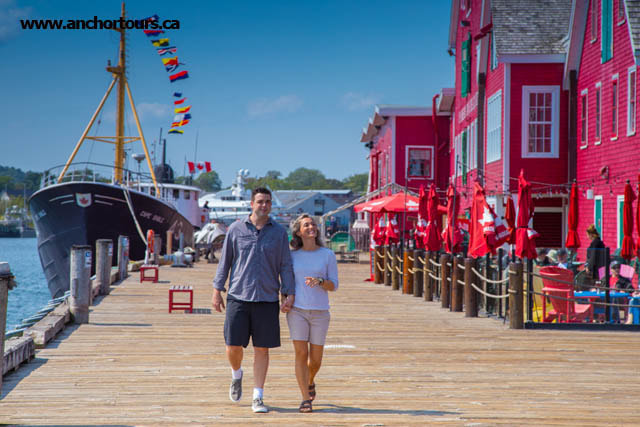
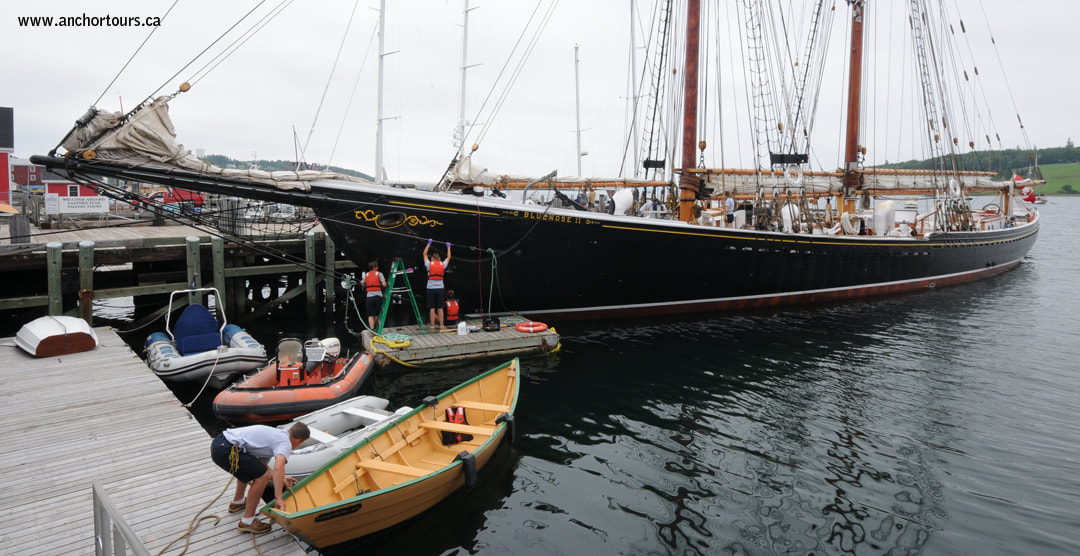
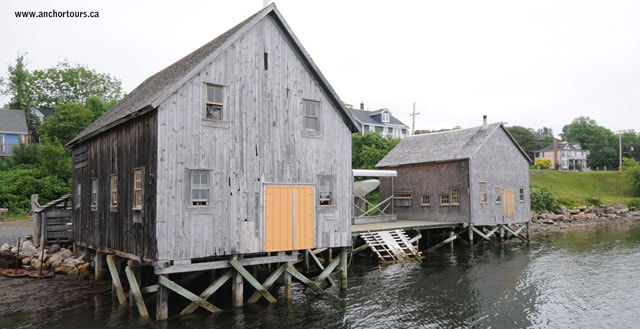
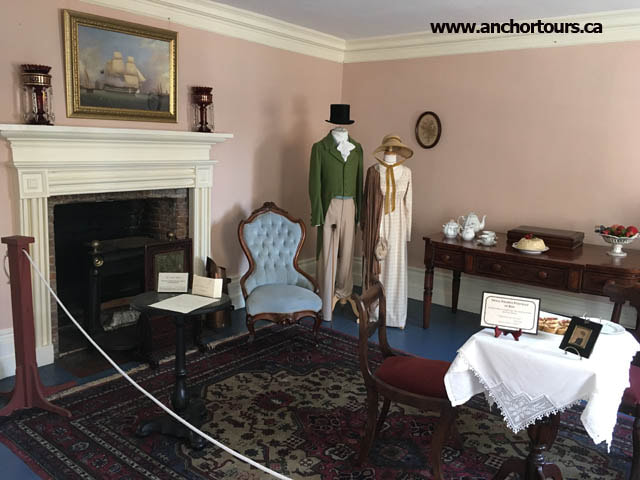
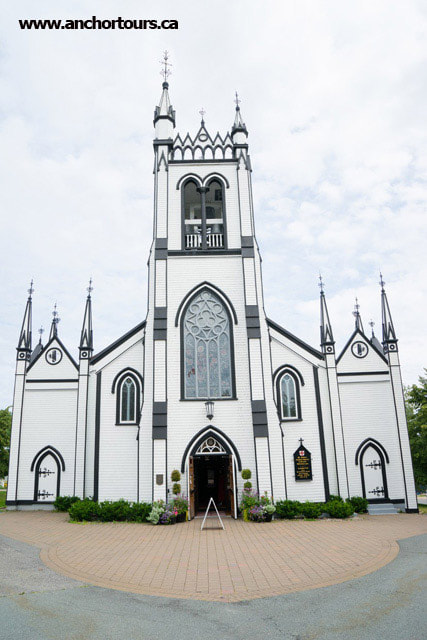
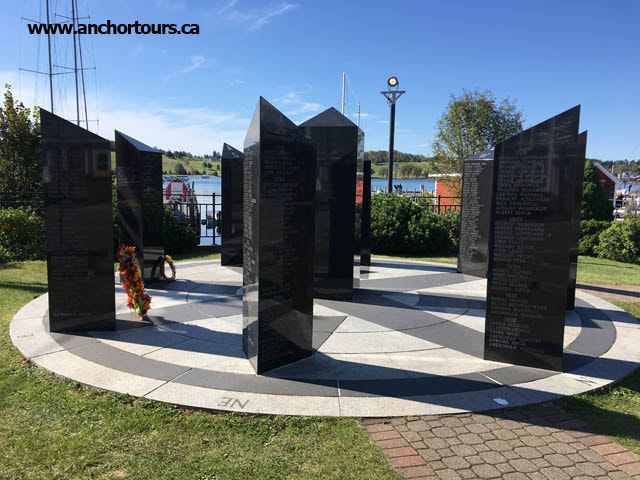
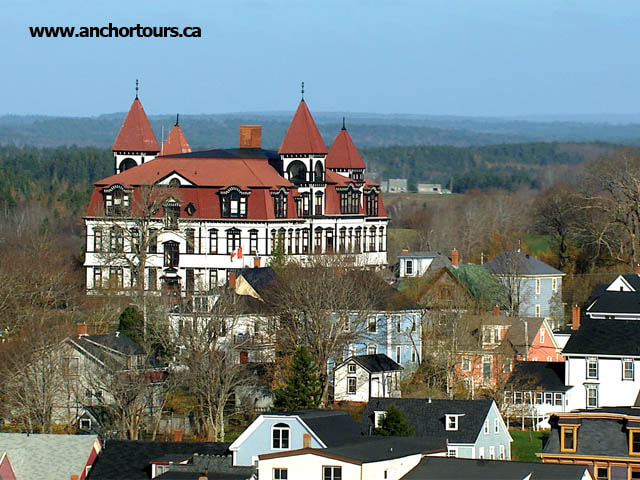
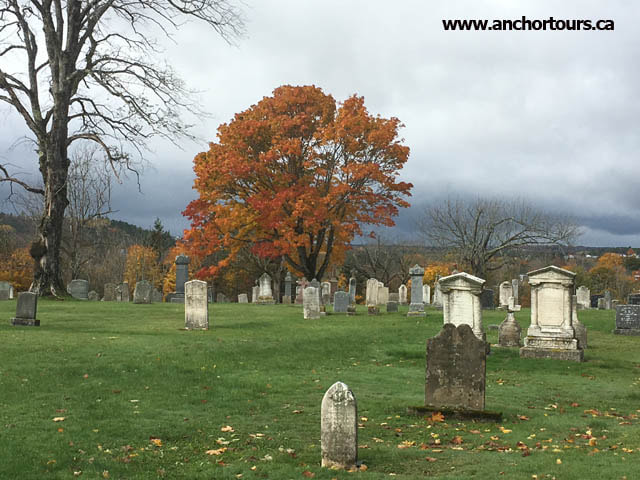
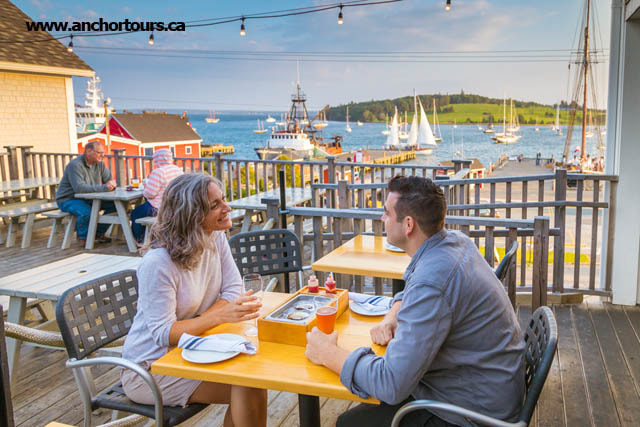
 RSS Feed
RSS Feed



